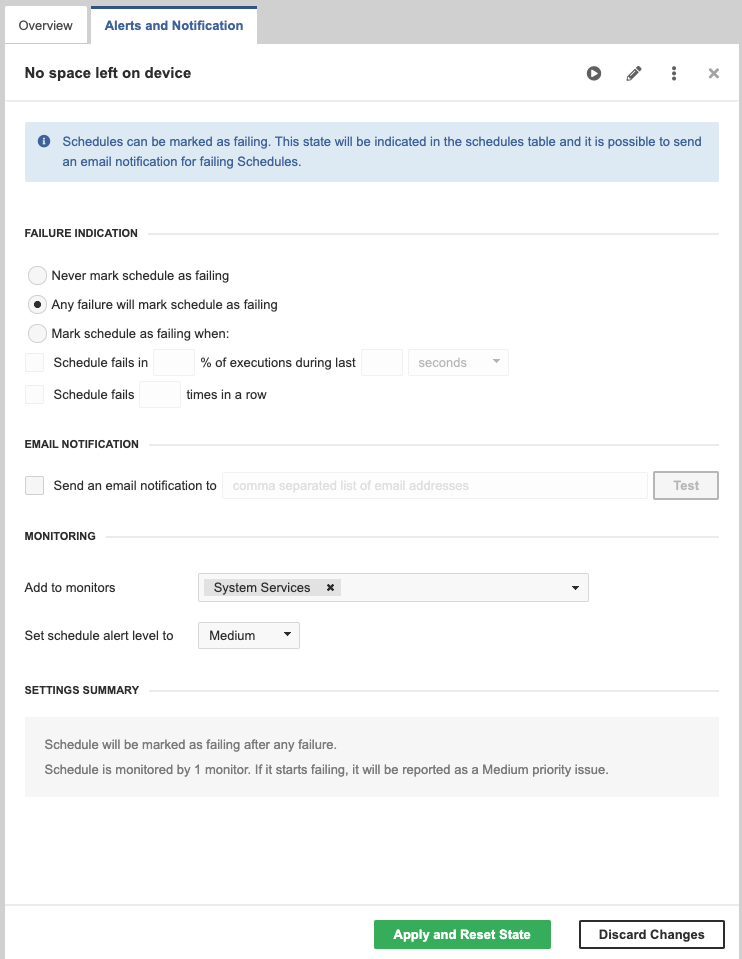
2. Scheduling
The scheduling module allows you to create a time schedule for operations you need to trigger in a repetitive or timely manner. Similar to cron from Unix systems, each schedule represents a separate time schedule definition and a task to perform.

The list of schedules provides the following information and options:
| Column name | Description |
|---|---|
Enabled |
Indicates whether the schedule is enabled or disabled. Clicking the icon enables/disables the schedule. |
Schedule |
Displays the schedule name, task type and its execution timing. |
Last run |
Shows the date and time of the last run. |
Next run |
Shows the date and time of the next scheduled run. |
⋮ |
Click the kebab menu to open a submenu with the following options:
|
| 1 |
If your Server environment is suspended, this action requires explicit confirmation of execution on the suspended server. |
Clicking on a schedule opens a pane on the right side, where the Overview tab displays additional information such as the schedule description[2] (if provided), the creation[3] and last update date along with the associated user [4], last and next run times, and other schedule details.
You can set up alerts and notifications for failed schedules on the Alerts and Notifications tab.
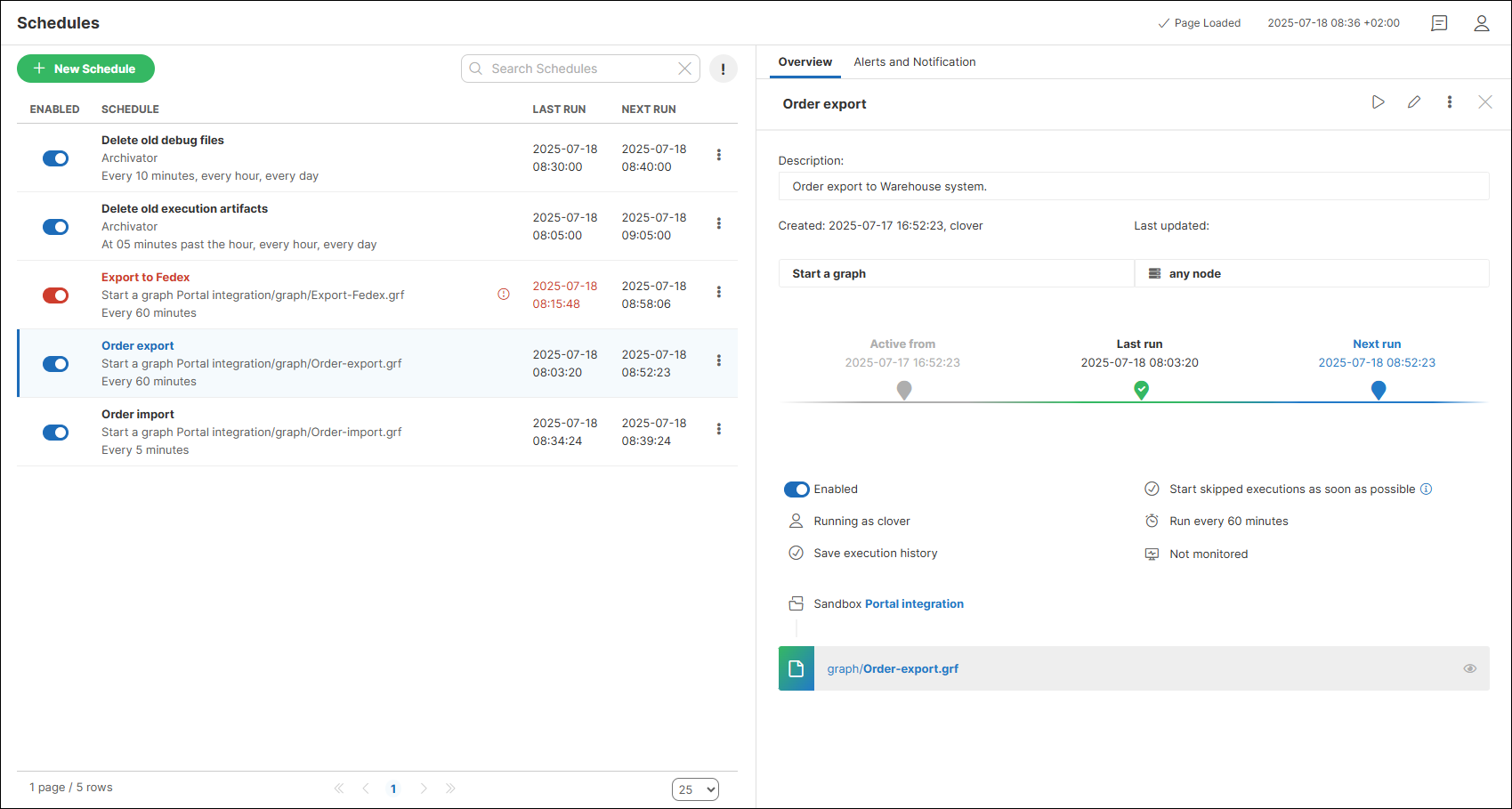
If a schedule is failing, you can see the cause of the failure in the right pane, and there is an additional action available in the ⋮ menu: Reset schedule state. When selecting this action, the schedule is no longer marked as failing. It acts as if it were never run, but its timeline is still visible in the detail pane. This function is useful when you fix a failing schedule with a long interval between runs and by resetting the state, you mark the schedule as OK. This way, it doesn’t cause a distraction by being shown as failing until its status is refreshed in the next run.
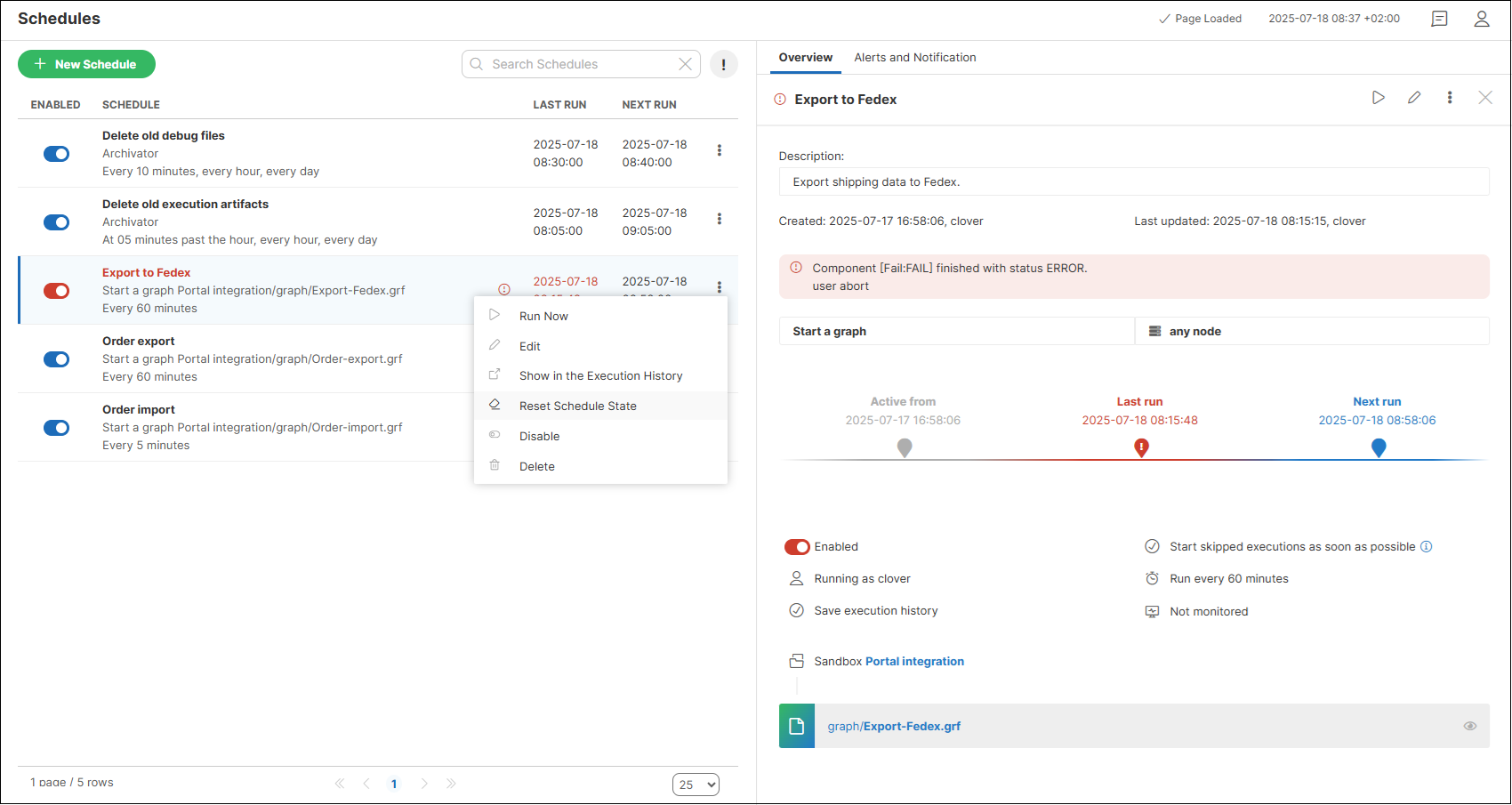
Timetable settings
This section describes how to configure schedule triggers. Note that exact trigger times are not guaranteed; a delay of a few seconds may occur. There are three schedule types: one-time, timetable (Cron-based), and interval schedules.
One-time schedule
This schedule is triggered just once.
| Name | Description |
|---|---|
Periodicity |
Onetime |
Start time |
Date and time, specified in the |
Start skipped executions as soon as possible |
If checked and execution is skipped for any reason (e.g., due to a server restart or job queue emergency mode), the task will be triggered as soon as possible. If not checked, the missed execution is ignored and will be triggered at the next scheduled time. |
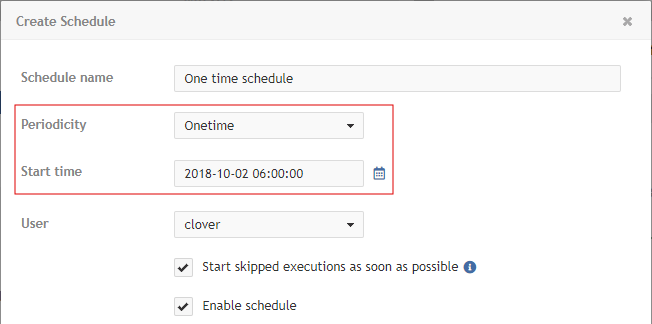
Periodical schedule by interval
This type of schedule is the simplest periodical type. Trigger times are specified by these attributes:
| Name | Description |
|---|---|
Periodicity |
Interval |
Run every |
Specifies the interval between two trigger times (in seconds, minutes, or hours). The next task is triggered even if the previous task is still running. |
Active from/to |
Date and time, specified in the |
Start skipped executions as soon as possible |
If checked and execution is skipped for any reason (e.g., due to a server restart or job queue emergency mode), the task will be triggered as soon as possible. If not checked, the missed execution is ignored and will be triggered at the next scheduled time. |
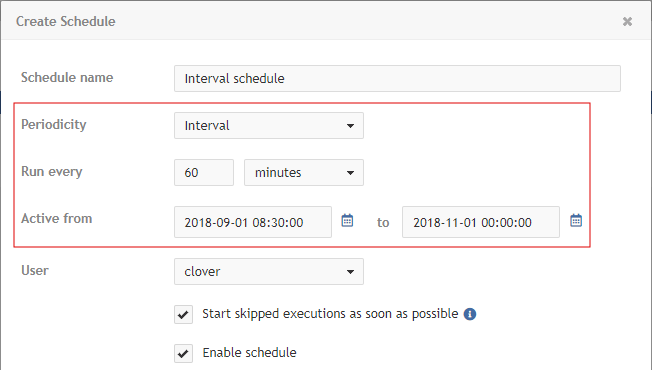
Periodical schedule by timetable (cron expression)
This schedule type allows you to create a timetable specified by a cron expression.
| Name | Description |
|---|---|
Periodicity |
Timetable |
Cron expression |
Cron is a job scheduler that uses its own format for scheduling.
E.g., |
Active from/to |
Date and time, specified in the |
Start skipped executions as soon as possible |
If checked and execution is skipped for any reason (e.g., due to a server restart or job queue emergency mode), the task will be triggered as soon as possible. If not checked, the missed execution is ignored and will be triggered at the next scheduled time. |
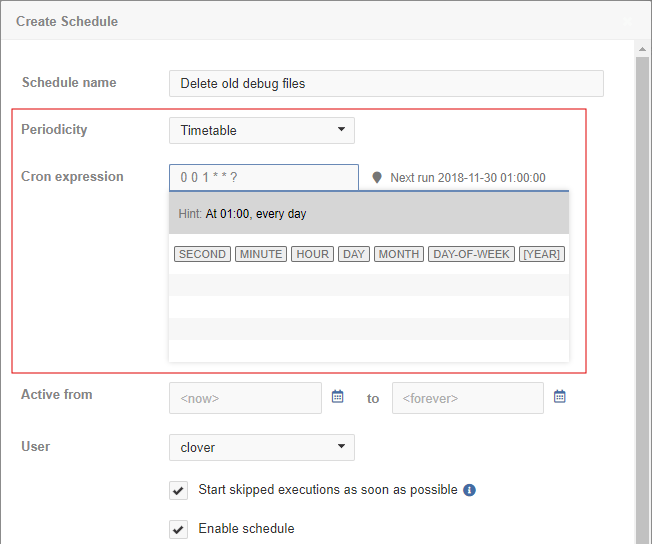
When setting up a cron expression, a hint displays it in a human-readable format. Furthermore, when you click on each field in the expression, the hint expands, indicating which part of the expression you are editing, and listing symbols, their meaning, and values that can be used in the expression.
|
Server cron expression for Days of Week differs from *nix cron expression. Days in the cron expression in CloverDX Server start from 1, which corresponds to Sunday. *nix cron expression uses 0 or 7 for Sunday. |
Allocations of scheduled tasks on nodes
In a cluster environment, you can set the node on which the scheduled task will be launched. If not set, the node will be selected automatically from all available nodes (but always just one).
If you choose:
-
Any node - one of the available nodes will be selected automatically.
-
One of selected nodes - you can select which node will run the task.

Tasks
When creating a schedule, you can choose from a variety of task types to trigger. For more information on each task type, see the Tasks section.
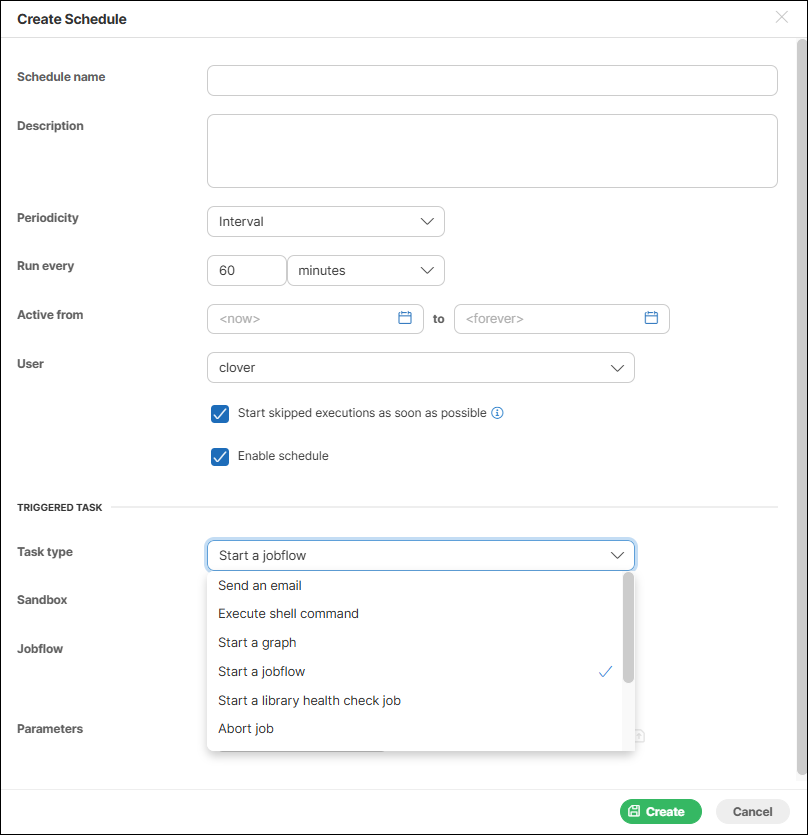
Alerts and notifications
The Alerts and Notification tab enables you to define the conditions under which a schedule is marked as failing. You can also set up email notifications for failures here and set up monitoring in the Operations Dashboard. See Alerts and notifications for more details.
